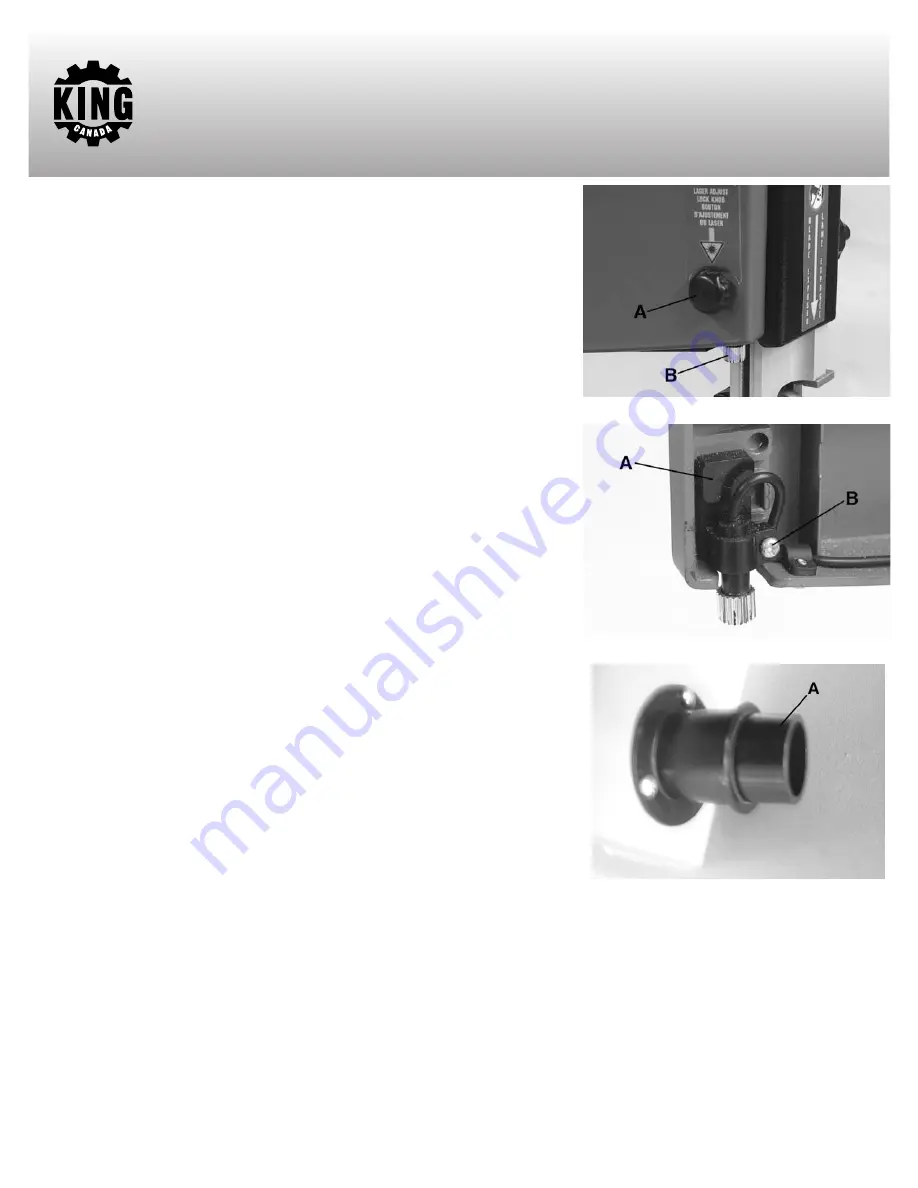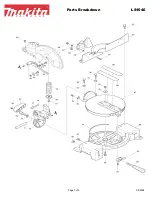
ADJUSTMENTS & OPERATION
USING THE LASER GUIDE SYSTEM
The laser guide system is controlled by the laser guide switch and will only turn on when
the bandsaw is plugged into a power source. This laser guide is used for ripping
operations only and the rip fence should be used.
Warning! Do not stare directly into the laser beam.
1) Mark the line of the cut on the workpiece and turn on laser guide.
2) Align the line of cut on the workpiece with the laser guide beam.
3) Adjust the rip fence against the side of the workpiece.
4) Start the bandsaw.
5) When the blade reaches its maximum speed, feed the workpiece slowly into the blade.
6) Once cut is finished, turn bandsaw and laser off and remove your workpiece and
cut-off piece off the table.
ADJUSTING LASER GUIDE SYSTEM
If your laser guide does not seem to be aligned with the blade kerf, adjustments can be
made.
1) Loosen laser guide adjust knob (A) Fig.16.
2) Place a scrap piece of wood on the table and make a partial cut to indicate the blade
kerf, stop bandsaw and leave scrap piece of wood in table.
3) Align the laser tip (B) Fig.16 with the blade by moving the laser assembly (A) Fig.17 side
to side, you can also turn the laser tip by loosening the fixing screw (B) Fig.17 until the
laser beam is perfectly aligned with the blade kerf, once aligned, hold laser tip,
retighten laser guide adjust knob and fixing screw.
USING DUST CHUTE- HIGHLY RECOMMENDED
1) This bandsaw comes with a 1-1/4” dust chute and adaptor (A) Fig.18 which accepts a
standard 1-1/4” vacuum hose or 1-1/4” dust collector adaptors. Note: Adaptor must be
inserted inside the dust chute.
Note: Wood dust and chips in a confined area can give rise to fire or an explosion.
Keep ignition sources away from bandsaw. Keep saw dust to a minimum by
cleaning the inside of the bandsaw after every use.
BASIC BAND SAW OPERATIONS
A bandsaw is basically a curve cutting machine. It is also used for straight line cutting such
as crosscutting, ripping, mitering, beveling, compound cutting.
This bandsaw was
designed to cut wood, wood-like products and plastics only.
For general cuts, follow the pattern lines by pushing and turning the workpiece
simul-taneously. Don’t attempt to turn the workpiece while engaged in the blade without
pushing it. If you don’t push the workpiece in this situation, the workpiece could bind or
twist the blade.
A curve cut is best performed by keeping the pattern line with the blade while turning the workpiece
before
the radius or the curve is cut. The
blade should cut in the middle of the pattern line (saw kerf) since wood cutting bandsaw blades are thin.
WARNING! To avoid blade contact, adjust the upper guide assembly so that it barely clears the workpiece.
1) Use both hands while feeding the workpiece into the blade. Hold the workpiece firmly against the table. Use gentle pressure. Do not force
the workpiece, but gently allow the blade to cut.
2) The smallest diameter circle that can be cut out is determined by the width of the blade. A 1/4” blade will cut a minimum diameter of approx.
1-1/2”. A 1/8” wide blade will cut a minimum diameter of approx. 1/2”.
NOTE: Relief cuts are made when an intricate curve (too small a radius for the blade) is to be cut. A relief cut is made by cutting through the
scrap section of a workpiece to the curve in a pattern line and then carefully backing the blade out. Several relief cuts should be made for
intricate curves. Then follow the pattern line as sections are cut off of the curve “relieving” blade pressure.
FIGURE 16
FIGURE 17
FIGURE 18






























